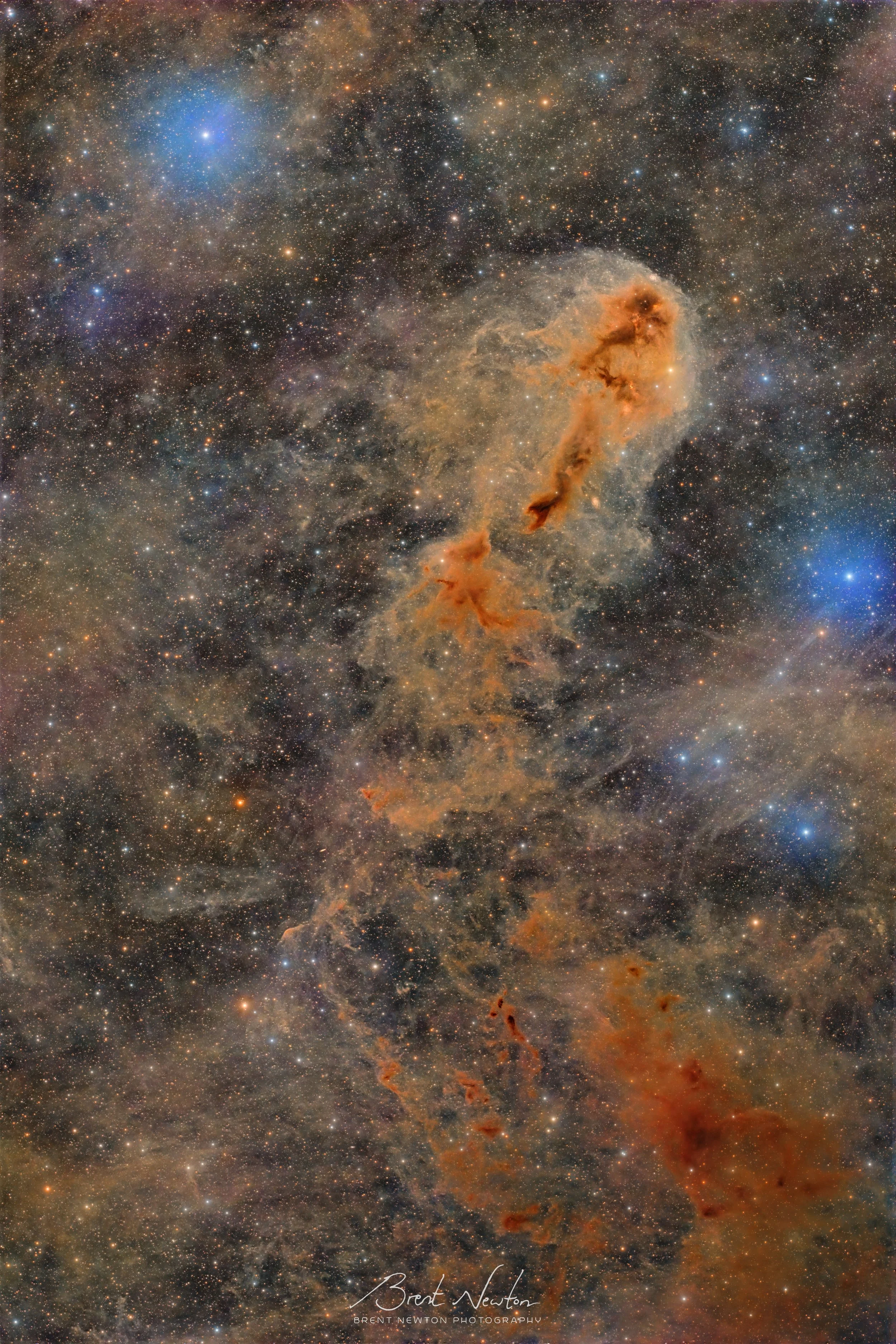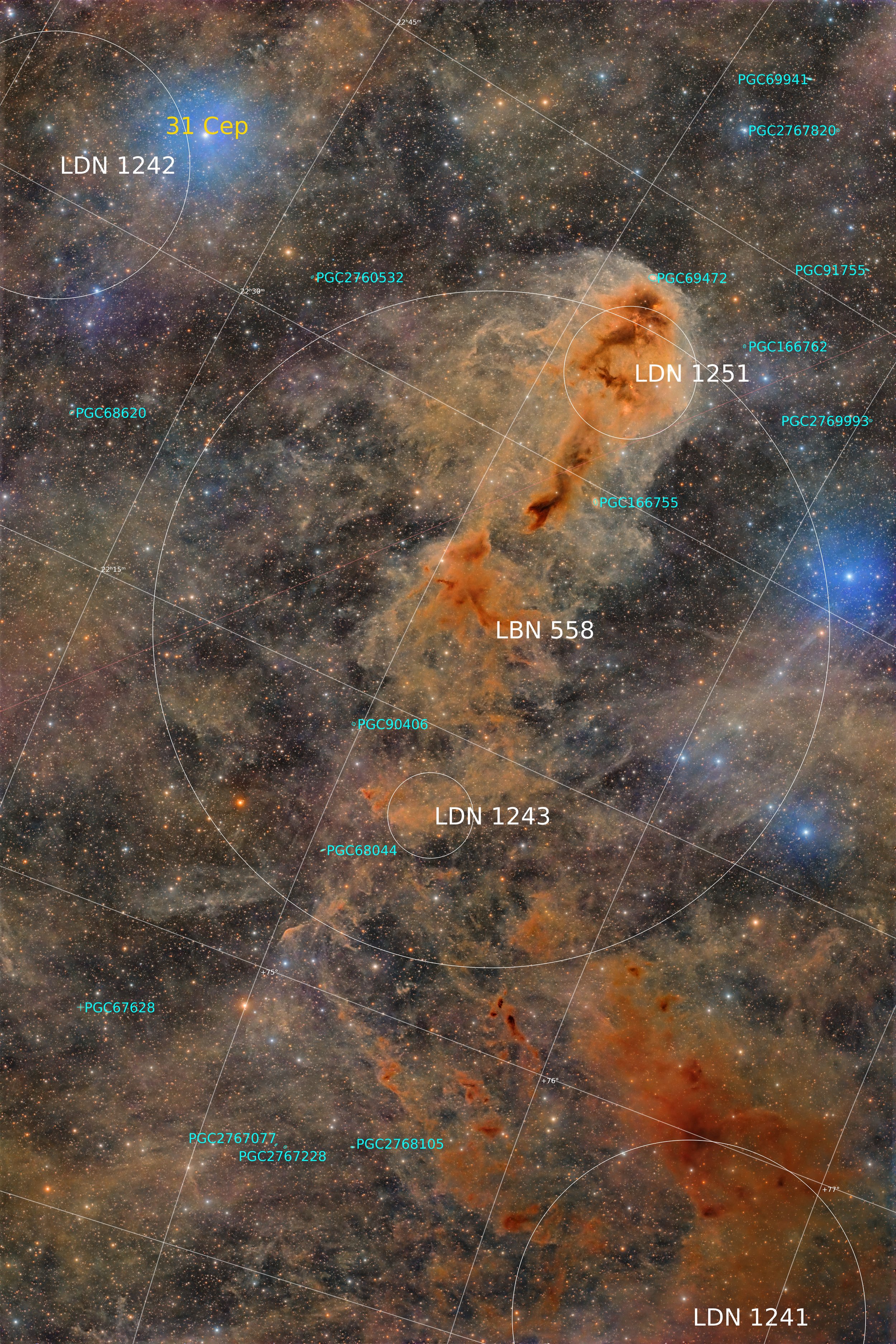LBN 558
Image Details:
This is a portion of the Cepheus Molecular Cloud, a collection of gas and dust about 1,000 lightyears distant. Dark nebula like this can be difficult to capture since, unlike emission regions which produce ionized light, they reflect only small amounts of broadband light, and in some cases entirely absorb visible light waves, obscuring the stars inside and behind the cloud (though the stars are often still visible, albeit in infrared or longer wavelengths). To rephrase, much of this nebulous material is Hydrogen (amongst other elements like Oxygen and Carbon), but most of it is simply too cold to become ionized (where it would instead appear in a red, pink, or teal / blue color, depending on other factors). Visually, these regions appear as little more than black voids amongst collections of dim stars, and photographically these types of targets are best left to capture under unpolluted skies (though this is technically true of any object beyond our solar system, but brighter nebula are easier to capture from polluted skies, all else being equal).
A wider view of this area of sky can be seen in this widefield shot which was captured from the dark skies of Western Oklahoma in October of 2024.
Equipment:
TS Optics 86mm Petzval (459mm Focal Length F/5.4)
ZWO ASI6200MM-P, Antlia Filters
AstroPhysics Mach2GTO Mount
Autoguiding: Orion 50mm Guidescope + ZWO ASI174MM
Exposures:
Luminance: 170 x 300” (Total: 14h 10m)
Red, Green, Blue: 102, 98, 94 x 300” (Total: 24h 30m)
Misc Details:
Capture Software: N.I.N.A. (capture), PHD2 (guiding)
Processing Software: PixInsight
Taken from: Starfront Observatories, TX, Bortle 1
Capture Dates: 29-31 July, 2-4, 6, 21-23, 25-27 August, 1 September, 2025

